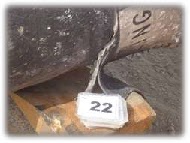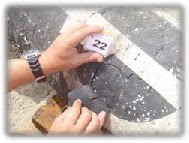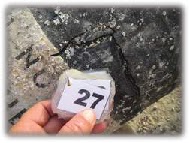Case study: Submarine and Floating Hose Change out
In 2018 Marsol was contracted to undertake the complete change out of subsea and floating hoses originally installed by an EPC contractor 6 years previously. On this particular system, hose sections had never previously been tested individually.
The Problem: Complete Hose Change out
The client’s SPM floating and subsea hoses were reaching the end of their predicted life expectancy and needed to be replaced. In order to minimize disruption to operations, this process had to be undertaken as quickly and efficiently as possible.
Some risks that had to be considered:
- Damaging the new hoses during handling and deployment
- Towing the floating hose and crossing shipping lanes
- Inadequate string assembly if performed at sea
The removal of old- and installation of new hoses on the buoy had to be undertaken as quickly as possible. Removed hoses needed to be inspected and tested to investigate any root causes of failure/wear that may contribute to increased long-term operational costs, and to determine their suitability for reuse
The Solution
Assemble the Marsol Hose Deployment Roller System at a suitable access site on the beach nearest the SPM. Load out hose sections and connect into a string in the dry. Tow the hose off the beach for a straight swap at the buoy offshore. Bring the old hose back to the beach for immediate recovery & disassembly.
The Process
This two-month project was tactically programmed to ensure the minimum viable product for the client, whereby large costs incurred by vessels and dive teams were only incurred for just over two weeks. The balance of the activities were executed by teams “on the beach” who made the materials ready for the offshore works.
To ensure that the SPM system was free from hydrocarbon product, and to avoid any spillage during the hose disconnection, the system was flushed with freshwater that was pumped from the floating hose end through the SPM, subsea hose and into the pipeline. This water-flush pushed the product down the fluid path into the pipeline towards the onshore storage tanks.
Subsea Hoses Change out
In this case, there was only one complete spare subsea hose-string, therefore a set of new subsea hoses had been purchased and delivered to the client ahead of the commencement of the project.
All subsea hoses were loaded on the Multicat Vessel in port, along with the tools and equipment required for the offshore works.
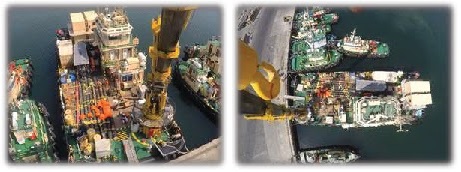
The subsea hose change out was performed on the Multicat deck successfully.
The hydraulic control umbilical was removed by the divers in order to allow work on the subsea hoses without damaging said umbilical. The first hose was then disconnected, removed, dismantled and discharged to a service vessel. The new hose was assembled and deployed into the water and installed under the buoy by the diving team.
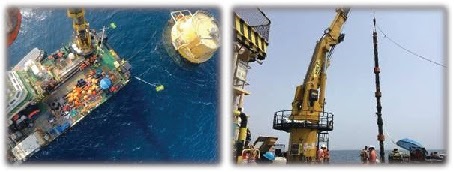
Similarly, the opposing hose was removed and replaced with the new string.
The removed hoses were sent ashore to be tested for residual life and serviceability.
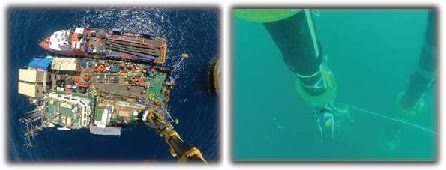
Floating Hose Change out
The second phase of this project was the floating hose change out which, although similar, required a different approach to that of the subsea hose change out.
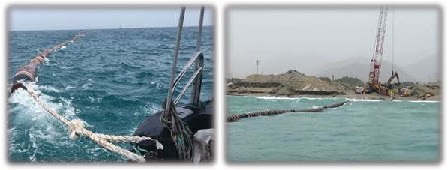
The Marsol onshore team commenced by loading and assembling the new floating hose on the Marsol Roller System. This modular hose deployment system increases efficiency but reduces risks and prevents the hose damage – usually incurred by ground contact and handling. The new Marine Breakaway Coupling (MBC) was assembled in the string and secured with special brackets to avoid activation while the hose string was towed to the SPM.
At the same time, the offshore team disconnected the old floating hose string and stored it, prior to removing it from the water – through the surf zone.
Back onshore, the newly assembled floating hose string was leak tested while on the Marsol Roller System, to ensure the integrity of the flange connections. The leak test was witnessed and signed-off by Class.
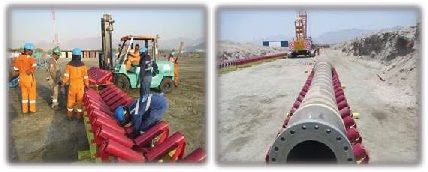
The newly assembled hose-string was then launched from the beach, towed to site and installed on the SPM.
Thereafter, the old floating hose was towed from the storage and recovered using the Marsol Roller System. The removed string was dismantled into individual hoses at the site and made ready for OCIMF testing.
SPM Pressure Test
To conclude the offshore works, a complete SPM system pressure test was performed by pumping water into the system from the floating hose, raising the pressure to the required level and holding the pressure for a certain number of hours. This test was undertaken in accordance with OCIMF and OEM guidelines, and was witnessed by CLASS.
OCIMF Testing and Storage of Removed Hoses
Following the recovery, all old hoses were cleaned, OCIMF tested and those suitable for reuse were stored in the storage containers.
Visual Testing
The result of the OCIMF and OEM visual inspection showed that some of the floating hoses failed the test and had to be retired.
The visual inspection also revealed that some of the subsea hoses had various superficial cuts and small areas of damage on the outer layer, however, those were allowed for further testing to ascertain suitability to be repaired and then held as spares.
Examples of superficially damaged hoses:
OCIMF Test Results
A number of hoses passed with reservations, while the recommendation for others was to be retired and not placed in storage for re-use
Test Result Findings
Based on the OCIMF testing, it was found that the hoses that passed the test could be kept as emergency spares up to the end of their shelf life (Estimated 10 years from the original date of manufacturing, as recommended by OEM and OCIMF guidelines).
Case Study Recommendations
It was Marsol’s recommendation that the client purchases additional spare hoses such that they can respond with replacement parts in case of a failure of any of the hose, or to change out short lifespan hoses like the FOB or Tanker Rail.
The recommendation was that the next OCIMF testing of the spare hoses to be done after two years to ensure that the emergency spare hoses are still suitable for service.
In this case it is planned to perform the hydrostatic burst test which would provide data that could be used to establish suitability for purpose, to gauge the extent of any damage and provide useful information to determine the service life and life extension of the hoses.
This information will be very important for new hose procurement planning.
In Closing
A SPM hose change out may be a routine procedure but is often overlooked as something that is not fully understood but done anyway ‘because it is required.’ This is a dangerous approach in the offshore industry because many protocols and procedures are no longer relevant, efficient or considered best practice. The method that Marsol describes in this article is the result of careful consideration of the particular site, the various design parameters of the assets and real-world conditions. The operation was executed safely and efficiently while exceeding the client expectations.
Let us help you achieve the same result. Get in touch to take charge of your next hose change out.
